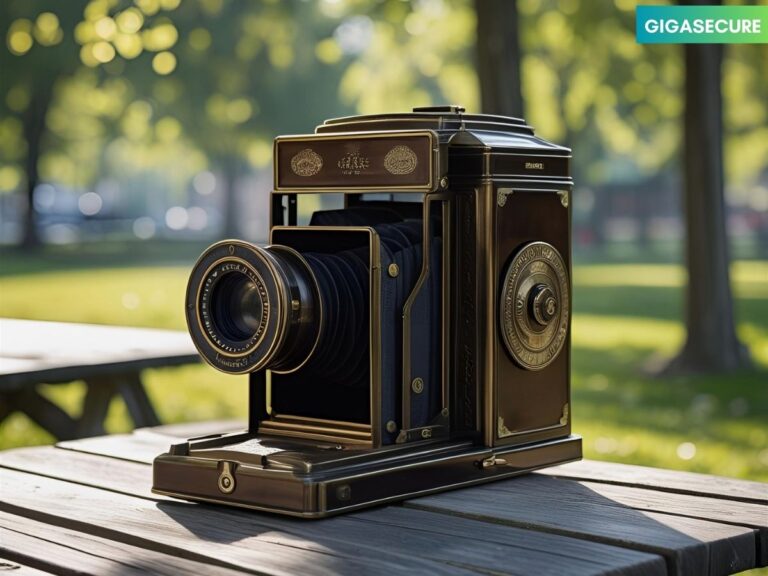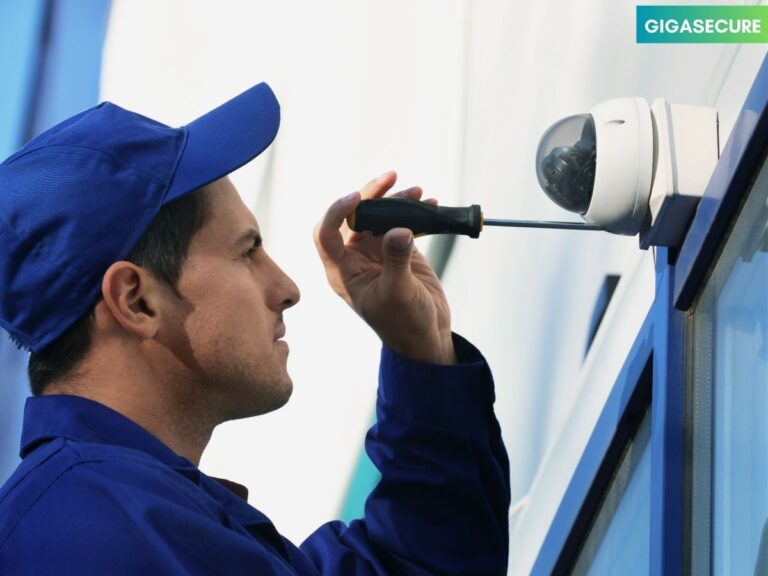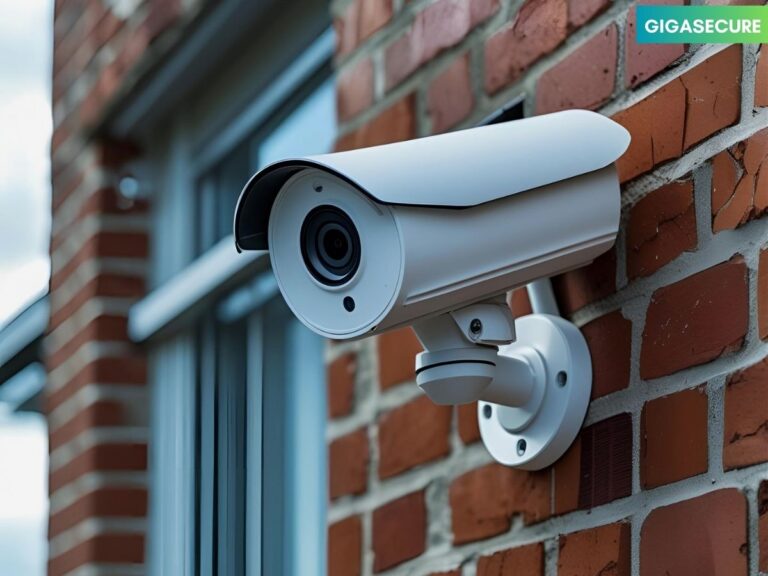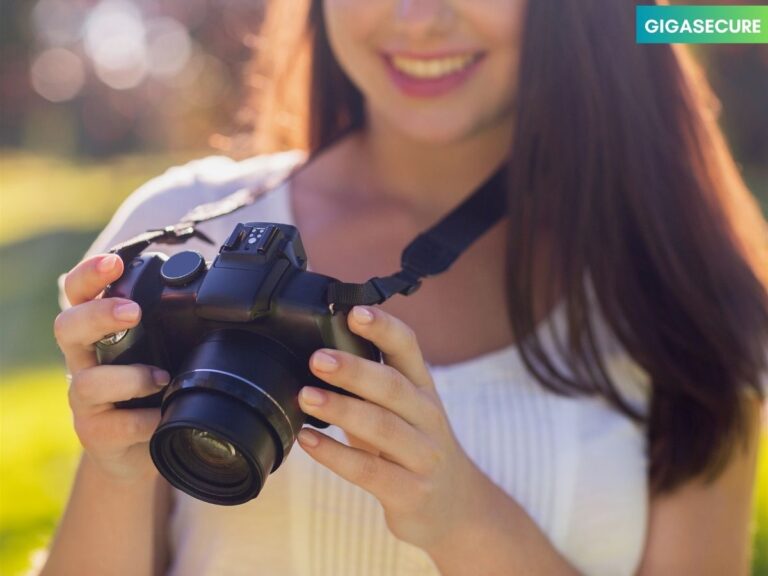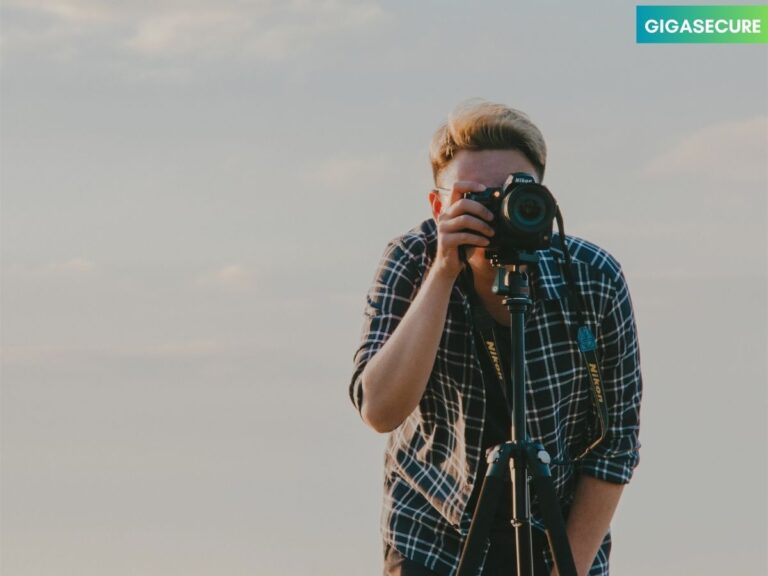Hide Outdoor Cameras Without Sacrificing View
As a homeowner, I’ve learned how vital outdoor security cameras are. But, they can be a problem if they’re too obvious. Effective outdoor security camera placement is key to keeping my home safe and looking good.
It’s a challenge to hide outdoor cameras without losing their effectiveness. In this article, I’ll share the best ways to keep them hidden while they keep an eye on things.
Key Takeaways
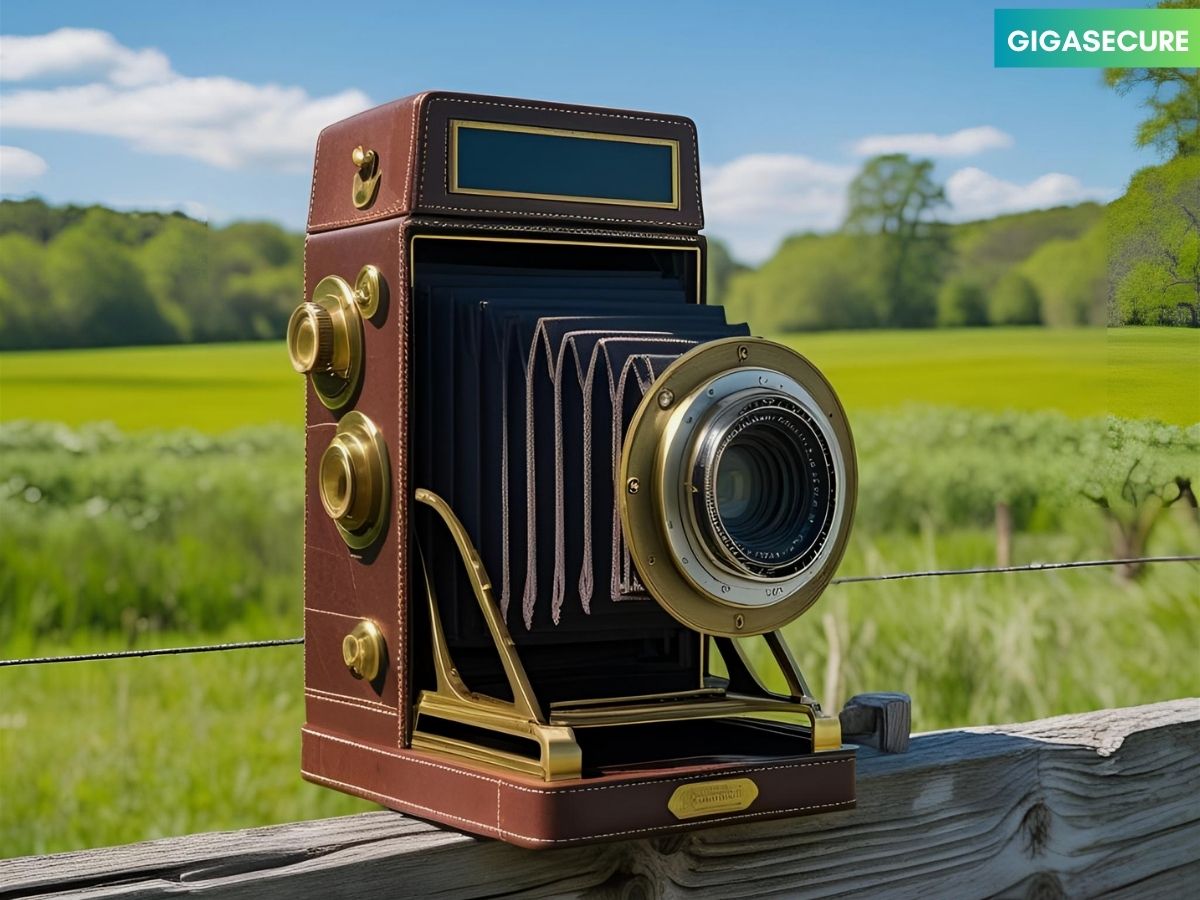
Why Hiding Your Outdoor Security Cameras Matters
Securing my property means more than just locking doors. It’s about where and how I place my outdoor cameras. Hiding them is key to their success.

Preventing Camera Tampering and Vandalism
One big reason to hide cameras is to stop tampering and vandalism. Cameras that are easy to see can attract vandals or intruders. By camouflaging outdoor cameras, I lower the chance of them being messed with or broken.

Maintaining Your Home’s Aesthetic Appeal
Keeping my home looking good is also important. Security cameras can make my property look bad. By concealing outdoor surveillance cameras well, my home stays pretty and safe.
Balancing Stealth and Deterrence Factors
Finding the right mix between hiding and showing cameras is essential. I need to make sure intruders know cameras are there.
This means some cameras are hidden, while others are in plain sight. This mix keeps my property safe and secure.
Understanding Different Types of Outdoor Cameras
Outdoor cameras come in many forms, each with its own features and challenges. The camera type you pick greatly affects its success and how well it blends in. Knowing these differences is key for placing outdoor security cameras effectively.
Bullet Cameras: Concealment Challenges and Solutions
Bullet cameras are sleek and often used to scare off intruders. But, their shape and size can make them stand out.
To hide them, try placing them in corners or under eaves. Using outdoor camera covers can also help them blend in.
Dome Cameras: Natural Disguise Advantages
Dome cameras are less noticeable because of their dome shape. They can be mounted on ceilings or walls, making them blend in naturally. Their design also allows for wide viewing angles, making them versatile for different spots.

PTZ Cameras: Hiding Moving Components
PTZ cameras can move and zoom, but their parts can be hard to hide. To conceal them, use a housing that fits in with the surroundings or cover them with plants.
Wireless Cameras: Flexible Placement Options
Wireless cameras are easy to place anywhere because they don’t need cables. This makes them great for hard-to-reach spots or for moving them around. Just make sure to hide their power source well.
| Camera Type | Concealment Challenges | Effective Concealment Strategies |
|---|---|---|
| Bullet | Noticeable shape and size | Place in corners or under eaves, use housings or casings |
| Dome | Less discreet than bullet cameras in certain mounts | Mount on ceilings or walls for natural disguise |
| PTZ | Moving parts | Use housing that matches surroundings, partial coverage with vegetation |
| Wireless | Power source visibility | Place in hard-to-reach areas, ensure power source is concealed |
Assessing Your Property for Strategic Camera Placement
To hide outdoor surveillance cameras well, you need to know your property. Look at the layout, find where intruders might come in, and pick the best spots for cameras.
Identifying Key Security Zones Without Obvious Mounting
I look for spots around my property that are easy for intruders to get to. These spots might be entrance gates, garage doors, or places near valuable things like sheds. I aim to find these spots without making the cameras easy to see.
Leveraging Architectural Features for Concealment
My property’s design helps hide cameras. For example, I can put cameras near eaves, under soffits, or in other parts of the building that hide them. This method keeps cameras out of sight and also protects them from weather.

Property-Specific Considerations (Apartments vs. Houses)
The kind of property I have affects where I can put cameras. Apartments might have cameras on balconies or by entrance doors.
Houses offer more spots, like the fence, backyard, and driveway. Knowing these differences helps me place cameras right.
Mapping Out Blind Spots and Coverage Gaps
After picking camera spots, I make a map to see where cameras won’t reach. I think about the camera’s view, quality, and any blocks. A detailed map makes sure my property is fully watched and secure.
| Property Type | Typical Camera Locations | Considerations |
|---|---|---|
| Apartment | Balcony, Entrance Door | Limited installation options, possible neighbor issues |
| House | Perimeter fence, Backyard, Driveway | More freedom in camera placement, wider coverage possible |
By carefully checking my property and placing cameras smartly, I boost my home’s safety. I also keep my surveillance system hidden.
Natural Camouflage Techniques for Outdoor Cameras
The art of hiding outdoor cameras is all about blending them with their surroundings. This not only makes your property look better but also keeps intruders from finding and messing with the cameras.

Integrating Cameras with Existing Trees and Shrubs
One great way to hide cameras is by placing them among trees and shrubs. This makes them less obvious. Make sure the camera can see what you want it to while being hidden by foliage.
Creating Dedicated Planting Areas for Camera Concealment
If there aren’t plants near your camera spot, create a new area for them. Planting around the camera can hide it well. Pick plants that are easy to care for and won’t block the camera’s view.
Using Artificial Plants and Decorative Elements
Artificial plants and decorations are good for places where real plants won’t work. They can cover cameras in a way that looks nice and works well. You can use fake rocks, garden ornaments, or even lights to hide cameras.
Seasonal Adjustments for Year-Round Camouflage
Remember to change your camera’s hiding spot with the seasons. For example, cameras hidden by trees might show up in winter when leaves fall. Check and adjust your camera’s hiding spot often to keep it effective all year.
Using these natural camouflage methods can help hide your outdoor cameras well. This keeps your home safe and looking good without anyone noticing the cameras.
How to Hide Outdoor Cameras Without Losing Visibility
Outdoor security cameras can be hidden without losing their effectiveness. The right strategies ensure they capture important footage while staying out of sight.
Optimal Positioning to Maintain Clear Sightlines
Positioning is key for hiding outdoor cameras. Place them where they capture the needed footage without being obvious. First, assess the area you want to monitor and find the best spots.
Dealing with Weather Interference (Rain, Snow, Fog)
Weather can affect outdoor camera visibility. Cameras with weather-resistant features like infrared or night vision work well. Also, keep the camera lens clean and free from blockages.

Testing and Adjusting Camera Angles After Concealment
After hiding your cameras, test their angles to ensure they capture the right footage. You might need to make adjustments for better positioning.
Using Camera Features to Compensate for Partial Obstruction
Some cameras have features like wide-angle lenses or digital zoom. These can help with any partial blockage from hiding. Knowing and using these features can improve camera performance.
| Camera Feature | Benefit |
|---|---|
| Infrared/Night Vision | Enhanced visibility in low light conditions |
| Wide-Angle Lens | Broader coverage area |
| Digital Zoom | Ability to zoom in on specific areas without losing clarity |
By using these strategies, you can hide your outdoor cameras effectively. This way, they remain visible and functional.
Creative Disguises for Outdoor Security Cameras
Outdoor security cameras can be hidden in plain sight with the right disguises. This approach not only enhances the security of your property but also maintains its aesthetic appeal.
Birdhouse and Feeder Camera Enclosures
One innovative way to conceal outdoor security cameras is by using birdhouse or feeder enclosures. These disguises blend seamlessly into the environment, making the camera less noticeable.
Rock and Garden Ornament Camera Covers
Another effective method is to use rock or garden ornament covers. These can be placed strategically around your property to monitor activity without being obvious.

Repurposing Outdoor Lighting Fixtures
Repurposing outdoor lighting fixtures is a clever way to hide security cameras. This method not only conceals the camera but also provides additional lighting for your property.
Mailbox and Utility Box Concealment Options
Mailbox and utility box concealments are also viable options. These everyday objects can house security cameras, making them less conspicuous.
| Disguise Type | Effectiveness | Aesthetic Appeal |
|---|---|---|
| Birdhouse/Feeder | High | Blends with nature |
| Rock/Garden Ornament | High | Decorative |
| Outdoor Lighting | Medium | Functional |
| Mailbox/Utility Box | Medium | Practical |
By using these creative disguises, you can effectively conceal your outdoor security cameras while maintaining their functionality.
DIY Camera Concealment Projects
With a few simple materials, you can make your own camera covers. These blends well with your outdoor space. It also keeps your home looking good while keeping it safe.
Essential Materials and Tools for Custom Covers
To begin, you’ll need some basic stuff and tools. You’ll need waterproof stuff, fake plants or garden decorations, and simple crafting tools like glue and scissors. Pick materials that match your outdoor look and hide your cameras well.
Step-by-Step Instructions for Three Easy Projects
Here are three easy DIY projects to try:
- Project 1: Make a camouflage cover with fake leaves and wire mesh. Wrap the mesh around your camera and fill it with leaves.
- Project 2: Turn an old outdoor light into a camera spot. Make sure it’s big enough for your camera and has air to breathe.
- Project 3: Use a decorative rock or ornament with a hole for your camera. It’s great for wide-angle lenses.

Weatherproofing Your DIY Camera Disguises
To keep your DIY covers weather-proof, add a waterproof coat or sealant. This protects your camera’s electronics and keeps it working well.
Ensuring Proper Ventilation to Prevent Overheating
It’s key to keep your cameras cool to avoid overheating. Make sure they have air by leaving small gaps or using breathable materials. This keeps your camera working right and lasts longer.
With these DIY projects, you can keep your home safe without ruining its look. Just make sure your cameras can see what they need to.
Technical Considerations for Hidden Cameras
To hide outdoor security cameras well, you need to think about a few key things. It’s important to keep them hidden but also working right.
Maintaining Wireless Signal Strength Through Covers
Keeping the wireless signal strong is a big deal when hiding cameras. You should pick materials that don’t mess with the signal. Metal can really hurt or block signals, but plastic or wood usually doesn’t.
Power Source Options for Concealed Locations
Choosing the right power source is also key. If you can’t get to a power outlet, battery or solar cameras are good choices. Make sure the power stays on so the camera keeps working.

Cable Management and Hiding Wires
Keeping cables tidy is important for a clean and safe setup. Hiding wires makes things look better and keeps them safe from tampering. You can use conduit or bury cables to keep things neat.
Night Vision Functionality with Camouflage
Night vision is a must for outdoor cameras. Make sure the hiding stuff doesn't block the infrared lights or the lens. This way, the camera can see at night without losing its cover.
| Technical Consideration | Impact on Camera Effectiveness | Solution |
|---|---|---|
| Wireless Signal Strength | Weak signal can lead to data loss | Use non-metallic covers |
| Power Source | Reliability affects continuous recording | Battery-powered or solar panels |
| Cable Management | Exposed wires can be tampered with | Use conduit or bury cables |
| Night Vision | Obstructed lens reduces effectiveness | Ensure camouflage doesn’t block IR LEDs or lens |
Commercial Camera Covers and Enclosures
Commercial camera covers and enclosures are great for hiding outdoor cameras. They work well with many camera types. This makes them a good choice for both security and looks.
Top Products for Different Camera Types
There are many top products for different cameras. This means you can find a cover that fits your camera perfectly. Some popular ones include:
- Universal camera housings that fit many camera models.
- Weather-resistant camera covers made for outdoor use.
- Disguised camera enclosures that look like rocks or birdhouses.

Installation Tips for Pre-Made Concealment Solutions
When putting on commercial camera covers, follow the maker’s guide. This ensures a good fit. Here are some tips:
- Pick a cover that fits your camera’s size and type.
- Make sure the cover doesn’t block the camera’s view or night vision.
- Secure the cover well to keep it from moving in the weather.
Cost-Effectiveness Analysis of Commercial Options
Commercial camera covers might seem pricey at first. But they save money in the long run by reducing damage and keeping your place looking good. It’s smart to weigh the costs against your security needs.
Customizing Store-Bought Covers for Better Concealment
Store-bought covers might need a little tweak to fit in perfectly. You can make them better by adding paint or decorations. Just make sure the changes don’t mess with the camera’s work.
Legal and Ethical Considerations When Hiding Cameras
When thinking about hiding outdoor cameras, it’s important to consider the legal and ethical sides. Hiding cameras isn’t just about being sneaky. It’s also about following the law and respecting privacy.
Privacy Laws for Residential Surveillance in the United States
It’s key to know the privacy laws in your area. In the U.S., laws about security cameras differ by state. But, recording in private areas or public spaces can cause legal problems.
Neighbor Notification Best Practices
Telling your neighbors about your security cameras is a good idea. It’s not always required by law, but it helps avoid confusion. You should post clear signs that your property is being watched.
Avoiding Recording in Prohibited Areas
Make sure your cameras don’t capture footage where they shouldn’t. This includes private areas of neighbors or certain public spots. Adjusting camera angles and using privacy features can help.
Signage Requirements for Hidden Security Systems
Even if your cameras are hidden, you might need to post signs. These signs should show that your property is being watched. Check local laws to make sure you’re following the rules.
By keeping these legal and ethical points in mind, you can hide your outdoor cameras effectively. This way, you stay within the law and respect others’ privacy.

FAQ Of Hide Outdoor Cameras Without Sacrificing View
How can I hide my outdoor security cameras without reducing their visibility?
To hide outdoor security cameras without losing visibility, start by choosing the right spot. Make sure the camera has a clear view. You can also use natural camouflage or creative disguises that fit in with your surroundings.After hiding the camera, check if its view is blocked. Adjust the camera angle if needed.
What are some effective ways to camouflage outdoor cameras?
Effective ways to camouflage outdoor cameras include blending them with trees and shrubs. You can also create special planting areas or use artificial plants. Another idea is to hide them in decorative items like birdhouses or garden ornaments.Remember to adjust your camouflage seasonally to keep it effective all year.
Can I use DIY projects to conceal my outdoor cameras?
Yes, you can use DIY projects to hide your outdoor cameras. You’ll need the right materials and tools to make custom covers. Make sure your covers don’t trap heat and are weatherproof.
Are there commercial camera covers and enclosures available?
Yes, there are commercial camera covers and enclosures for different types of cameras. Look for covers that are easy to install and cost-effective. You might also find options that can be customized for better hiding.
What technical considerations should I keep in mind when hiding cameras?
When hiding cameras, think about keeping the wireless signal strong. Make sure the camera has power in its new spot. You’ll also need to manage cables and ensure night vision works even when hidden.
Are there any legal considerations I should be aware of when hiding outdoor cameras?
Yes, there are legal things to think about when hiding outdoor cameras. Check local laws about surveillance at home. It’s also important to tell your neighbors and avoid recording in places you shouldn’t. You might need to post signs about your security system.
How do I assess my property for strategic camera placement?
To find the best spots for your cameras, first identify important security areas. Use your home’s design to hide them. Think about your property’s unique features and map out any blind spots.
What are the benefits of hiding outdoor security cameras?
Hiding outdoor security cameras can stop tampering and keep your home looking nice. It also helps balance being sneaky with being a deterrent. Plus, it can make your security system work better.
Conclusion
As I wrap up this article, I’ve shown how important it is to hide outdoor security cameras. It’s key to keep your place safe while it looks good.
Knowing about different outdoor cameras and where to put them is vital. I’ve shared tips on hiding them well, like using nature, creative tricks, and DIY projects. This way, you can keep your cameras hidden but not out of sight.
Remember, when hiding your cameras, think about the tech side too. Make sure your wireless signal is strong and your cameras breathe.
Also, know the laws and how to tell your neighbors about your cameras. This keeps your system working right and legal.
By using these tips, you can make your outdoor space safer and prettier. You’ll get the best of both worlds: security and style.


